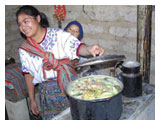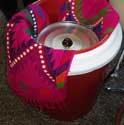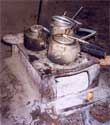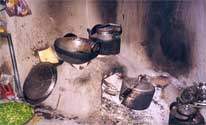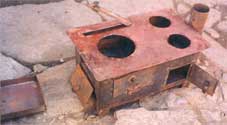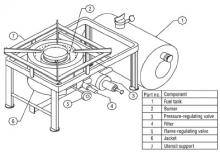Improved Stoves and Organic Briquettes
Demetrio Roja, ADRA Peru August 2003
Richard Stanley, Legacy Foundation
Fogones mejorados y Briquetas Orgánicas
Fogones Mejorados
En la actualidad las diferentes comunidades no cuentan con cocinas técnicamente diseñadas y más aún no conocen tecnologías adecuadas con respecto a fogones ecológicos. En todos los casos se ha podido verificado IN-SITU, que las cocinas actuales son rústicas las denominadas Conchas, los que generan bastante humo, además de producir hulla, lignito y antracita con el tiempo. Por otro lado la extrema pobreza de los pobladores ha hecho que algunas autoridades muestre interés en solucionar dicho problema existente.
También se ha
observado que las ama de casa y los niños son las que sufren las consecuencias
de los humos que genera las cocinas rústicas actuales, teniendo como
consecuencia la enfermedad de antracosis.
La construcción de los fogones mejorados
tiene como finalidad evitar la presencia de humo dentro de la cocina ya que
esto genera amarillamiento de los ojos, crecimiento de carnosidad, afecta
directamente el aparato respiratorio pulmones, arterias pulmonares, fosas
nasales, etc, afecta el aparato digestivo, también evitara que el hollín se
acumule en el techo y paredes.
Los fogones
utilizados en el campo son precarios y antihigiénicos, su uso de este tipo de
fogones afecta a la salud de la madre y del niño ya que ellos son los que están en forma permanente dentro de la cocina.
El uso de los
FOGONES MEJORADOS tiene la finalidad de Mejorar las condiciones de Saneamiento Intradomiciliario en las viviendas rurales, ahorrar el combustible (leña) hasta en un 40 % y evitar el deterioro de los utensilios de cocina, así mejorar la calidad de vida del poblador del Ande Peruano.
ADRA PERU, en la
actualidad tiene un total de 720 fogones construidos, de los cuales 240 se
construidos en el presente año.
Costo: cada fogón tiene un costo de US$ 25.00 dólares americanos.
MANUAL PARA LA CONSTRUCCION DE FOGONES MEJORADOS
